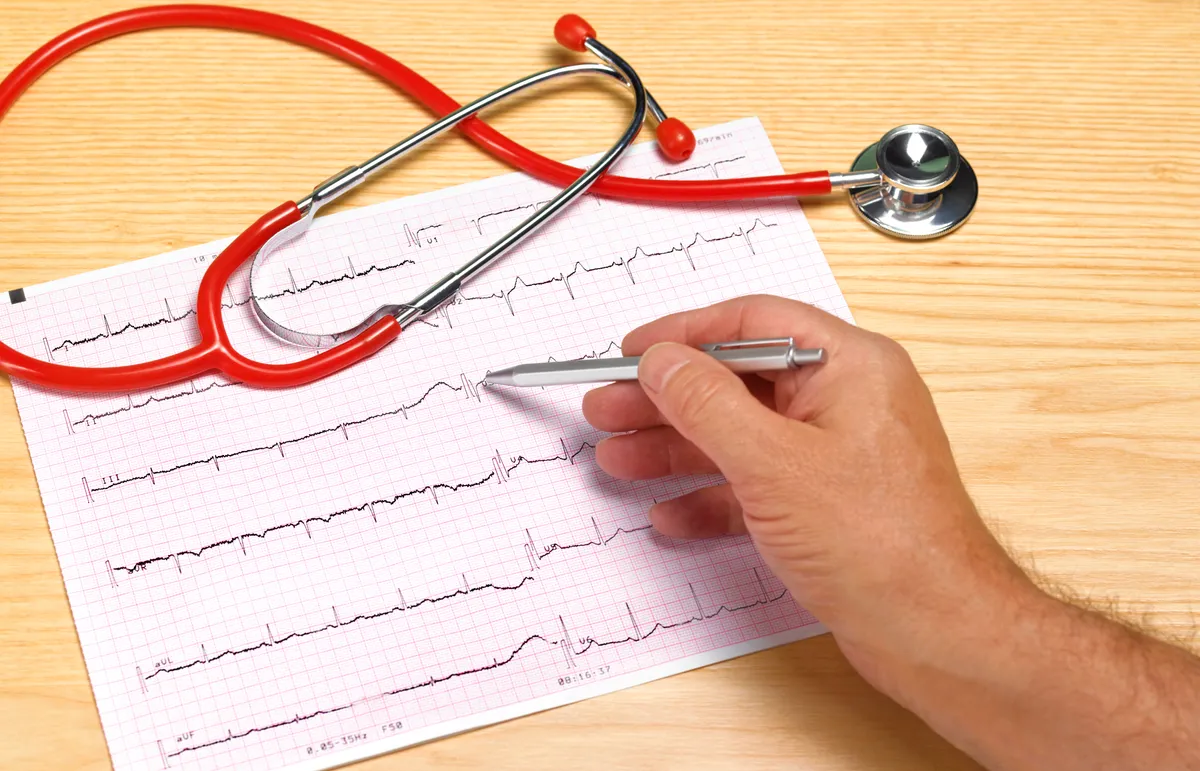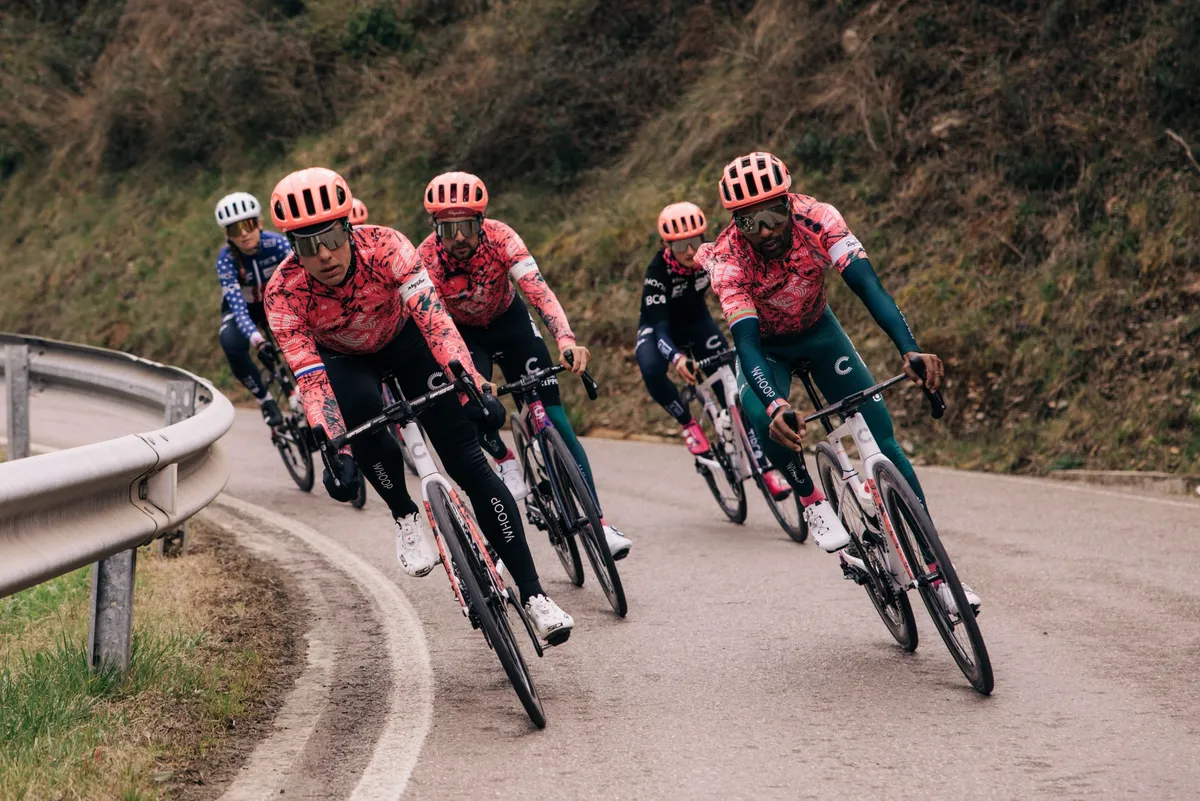Measuring your heart rate has long been established as one of the easiest ways to monitor your effort while exercising but, in recent years, heart rate variability has emerged as a new metric that can help riders keep abreast of their overall health and wellbeing.
Using heart rate training zones enables cyclists to target specific areas of fitness and understand the body’s physiological response to riding.
But there’s more you can learn from how your heart is functioning, based on your heart rate variability (HRV), and it’s a topic of increasing interest both to athletes and the medical community.
Let’s take a closer look at what heart rate variability is, why it’s important and how you might be able to use it to your advantage.
What is heart rate variability?
According to the Harvard Medical School, heart rate variability is “simply a measure of the variation in time between each heartbeat”.
We’re used to the regular bump-bump of the heart as it beats, but this rhythm is less regular than it at first appears, with measurable differences in milliseconds in the time between successive beats.
“The fluctuation in your heart rate – the variance in time between the beats of your heart – is heart rate variability,” says Kristen Holmes, VP of performance science at WHOOP.
“If your heart beats 60 times per minute, it’s not actually beating once per second. For example, within that minute there may be 0.9 seconds between two beats and 1.1 seconds between two others. The greater this variability is, the more ‘ready’ your body is to perform at a high level.”
Heart rate is controlled by your autonomic nervous system, which regulates the things that carry on without you having to think about them.
“It works behind the scenes, automatically regulating our heart rate, blood pressure, breathing and digestion among other key tasks,” says the Harvard Medical School. “The autonomic nervous system is subdivided into two large components: the sympathetic and the parasympathetic nervous system.”
Whereas the sympathetic nervous system manages increases in heart rate and blood pressure – the so-called ‘fight or flight’ response – the parasympathetic nervous system works in the opposite direction, slowing heart rate and reducing blood pressure - also called ‘rest and digest’.
The interplay between these two systems controls your heart rate, as well as other background bodily functions, working in response to external and internal stimuli.
Heart rate variability increases when you’re more relaxed and your parasympathetic nervous system is in control, but decreases under stress when your sympathetic nervous system dominates.
“Heart rate variability comes from the two branches of your autonomic nervous system simultaneously sending signals to your heart,” adds Holmes.
“If your nervous system is balanced, your heart is constantly being told to beat slower by your parasympathetic system, and beat faster by your sympathetic system. This causes a fluctuation in your heart rate.”
How is heart rate variability tracked?

To track HRV, you need to be able to accurately measure the time between successive beats of the heart. More specifically, it’s the RR interval, which is the period between the large peaks in heart electrical activity you see on an electrocardiogram (ECG), as featured in all good hospital dramas.
An electrocardiogram trace is the gold standard in tracking HRV, because the electrodes attached to your chest provide an accurate measure of the peaks.
In recent years, a number of wearable devices have emerged that can track HRV, including the WHOOP 4.0 strap. It’s a wrist-worn strap with a set of light-based sensors that measure your heart rate, blood oxygen levels and skin temperature.
HRV needs to be tracked over many heartbeats to get an accurate measurement. The data is usually expressed as a root mean square deviation, a statistical analysis that measures the spread of values.
“Heart rate variability is a very sensitive metric that varies significantly throughout the day,” says Holmes. “Tracking it when you’re active is not always useful because it fluctuates so drastically from one moment to the next.”
As a result, the strap takes a ‘dynamic average’ during sleep. “It’s weighted towards your last slow wave sleep stage each night, when you’re in your deepest period of sleep and your body is most at rest,” Holmes adds. “This gives you an accurate understanding of your baseline so you can monitor your trends.”
Many of the best cycling watches also use optical heart rate sensors on your wrist to follow your heart rate and can identify your levels of heart rate variability. With some models, you can also use the watch alongside a heart rate strap.
Garmin smartwatches, such as the Fenix 7, use heart rate and HRV data to give you a ‘Body Battery’ number, which estimates how your energy levels are changing throughout the day. There’s also the option to use a heart rate strap to get a three-minute HRV trace. HRV is something that Polar and Suunto smartwatches track and analyse too.
What are the benefits of tracking heart rate variability?

We’ll go into the benefits of monitoring heart rate variability when it comes to your training later on, but there are more general advantages of keeping tabs on your HRV and how it varies over time.
According to the Harvard Medical School, “HRV may offer a non-invasive way to signal imbalances in the autonomic nervous system.”
“When you have high heart rate variability, it means that your body is responsive to both sets of inputs (parasympathetic and sympathetic). That’s a sign your nervous system is balanced, and that your body is very capable of adapting to its environment and performing at its best,” Holmes adds.
“But if you have low HRV, one branch is dominating the other (usually the sympathetic) and sending stronger signals to your heart. This indicates your body is working hard for some reason – maybe you’re fatigued, dehydrated, stressed, or sick and need to recover.”
Those imbalances can come as a result of a wide range of factors, including training, lifestyle and biological factors, according to WHOOP.
"HRV is a holistic indicator of stress," says Simon Wegerif, the founder of ithlete, a HRV tracking tool, in a podcast with TrainingPeaks. “HRV is useful partly because it’s such an inclusive indicator of stress, fatigue and recovery.”
| Training factors | Lifestyle factors | Biological factors |
|---|---|---|
| Volume | Diet and nutrition | Age |
| Intensity | Alcohol | Gender |
| New/unfamiliar stimuli | Circadian rhythm and sleep habits | Genetics |
| Balance between rest and workout days | Stress | Chronic health conditions |
The Harvard Medical School says a high HRV may indicate greater cardiovascular fitness and more resilience to stress.
“You might see a connection to HRV changes as you incorporate more mindfulness, meditation, sleep and especially physical activity into your life,” it adds. “For those who love data and numbers, this could be a way to track how your nervous system is reacting not only to the environment, but also to your emotions, thoughts and feelings.
The EF Education-EasyPost pro cycling team uses WHOOP’s device to track its riders. The team’s Neilson Powless reports finding that his numbers were abnormal and HRV depressed. He went for a Covid test, which came back positive, alerting him that he had the disease three days before he developed symptoms.
He also found that his HRV was low prior to getting sick and withdrawing from stage four of the 2022 Paris-Nice race. Tracking HRV has also led to changes in Powless’s meal patterns, so that he now tries to eat both before and after a training session, having a lighter meal in the evening because this gives him better fitness metrics than eating more later in the day.

“HRV is very useful with sickness, as often it gives some forewarning, of at least a few hours but sometimes two or three days,” says Simon Wegerif.
“Most endurance athletes are pretty motivated people and don't want to spend too long off training.
“If someone gets a cough or a cold, it typically takes two weeks to work its way through completely, but it's the first three or four days that are the worst and those are typically the ones associated with the poor HRV.
“After that, it could be that the HRV starts improving significantly, at which point the athlete can get back to low-intensity training when they still have the blocked-up nose or sore throat, but their body is in better shape to withstand the start of training again.”
In summary, HRV can potentially be used to identify how a range of factors impact health and wellbeing.
However, the Harvard Medical School issues a word of caution: “While HRV has been linked to overall physical fitness, the correlation between changes in HRV and how your autonomic nervous system is functioning will require much more research.
“Still, if you decide to use HRV as another piece of health data, do not get too confident if you have a high HRV, or too worried if your HRV is low. Think of HRV as another way you might tap into [how] your body and mind are responding to your daily experiences.”
What is a ‘good’ heart rate variability?
HRV is a measure that’s very personal and can vary significantly between individuals, so rather than being something that you can compare to other people, it’s more a question of what's ‘good for you’.
WHOOP’s Holmes says: “HRV varies greatly from one person to the next. Younger people usually have higher HRV than older people, and males may have slightly higher HRV than females. Elite athletes usually have greater HRV than other people (particularly endurance athletes), but it’s not absolute. What constitutes good heart rate variability differs for everyone.”
As a result, it is advisable to track HRV as a trend. This, Holmes says, will enable you to assess the positive impact of any lifestyle changes or, equally, spot a downward trend that may be a result of overtraining, sickness or insufficient sleep.
How can heart rate variability inform your training?

HRV is a metric that’s increasingly being incorporated into the training of elite cyclists, primarily as a means to assess the body’s readiness to train.
According to a study by the Miguel Hernández University and Stellenbosch University, summarised by TrainingPeaks, athletes following a training programme guided by HRV achieved “substantially greater increases in peak power (5 per cent), power at VT2 (14 per cent), and power over the 40-minute time trial (7 per cent) compared to traditional training, where the peak and 40-minute time trial power hardly improved at all.”
During the study, a seven-day rolling average of HRV, measured every morning using a Polar H7 chest strap, was used for prescribing training load.
Not all cyclists have the benefits of a university-backed study, of course, but HRV has become a key metric in the latest wearable devices. WHOOP uses HRV, along with other measures such as resting heart rate, sleep quality and breathing rate, as part of its recovery analysis.
It then uses a traffic-light system to categorise your readiness to train, with green signifying that you can take on a more strenuous workout, amber that you’re in maintenance mode and red that it’s time for a recovery day. Garmin has a similar approach with its ‘Body Battery’ and ‘Stress’ scores, which are based on an all-day HRV measurement.
“Rather than sticking to a regular workout schedule, modifying the intensity and duration of your exercise based on heart rate variability will allow you to train smarter and more efficiently,” says Holmes.
“When your HRV is high, your body is ready to take on a greater workload or strain. When it’s low, it’s a sign to cut back and focus on recovery."
“HRV can be a valuable tool for making the most of your training,” she adds. “After days of strenuous activity, your HRV will drop. With proper rest and recovery it will then rise, letting you know when it’s a good time to push yourself again.”

